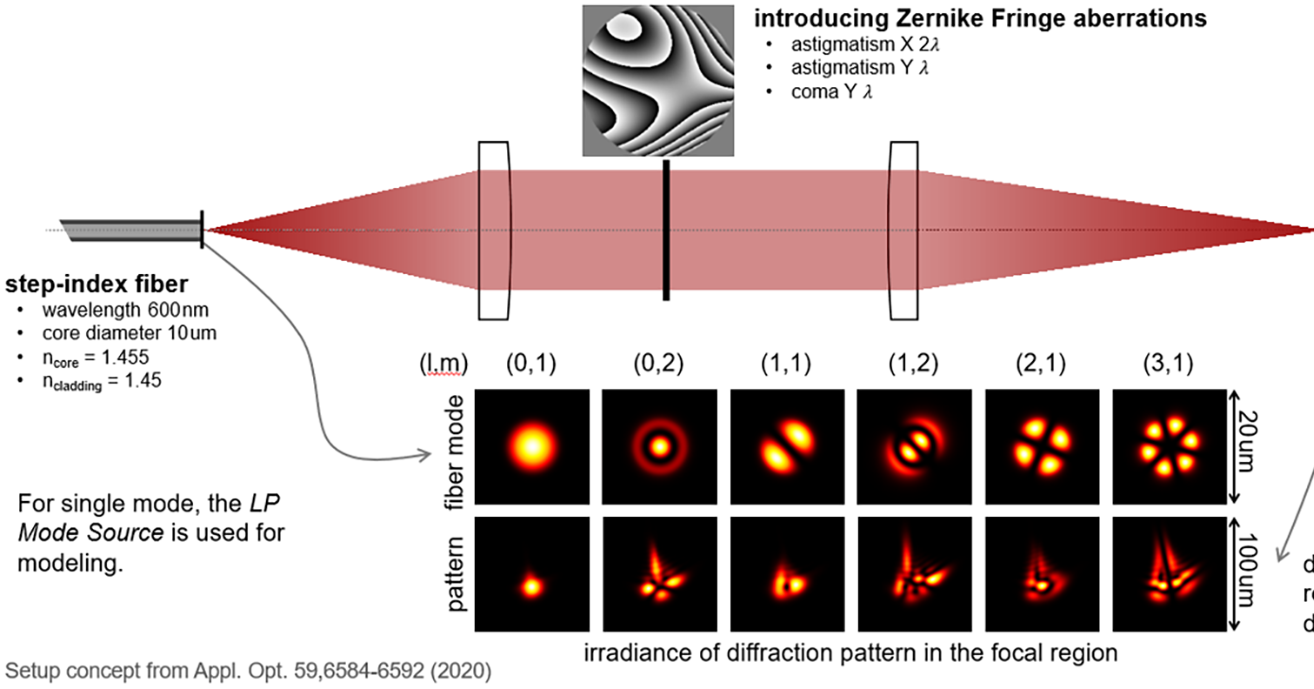Contents
- 1 Understanding Optical Fiber Modes
- 1.1 Introduction to Optical Fiber Modes
- 1.2 Transverse Refractive Index Profiles
- 1.3 Fiber Modes: LP, TE, TM, HE, and EH Modes
- 1.4 Mathematical Representation of LP Modes
- 1.5 Step-Index Fibers and Their Properties
- 1.6 Fibers with Varying Refractive Index Profiles
- 1.7 Velocity and Dispersion in Optical Fibers
- 1.8 Orbital Angular Momentum and Mode Optimization
- 1.9 Conclusion

Source: RP Photonics
Understanding Optical Fiber Modes
Introduction to Optical Fiber Modes
Optical fibers are a fundamental component of modern telecommunications, enabling the transmission of data over long distances with minimal loss. The behavior of light within these fibers is determined by their modes, which are specific patterns of electromagnetic fields. Understanding these modes is crucial for optimizing fiber performance in various applications.
Transverse Refractive Index Profiles
Most optical fibers exhibit radially symmetric transverse refractive index profiles, meaning the refractive index changes only with the radial coordinate and not with the azimuthal angle. This property simplifies the calculation of fiber modes, especially for fibers with a small index contrast. In these cases, fibers can be considered weakly guiding, resulting in linearly polarized (LP) modes.
Fiber Modes: LP, TE, TM, HE, and EH Modes
In weakly guiding fibers, the modes are primarily LP modes, where the electric field is predominantly linear. However, in fibers with stronger guidance, such as nanofibers with a glass/air interface, we encounter transverse electric (TE) and transverse magnetic (TM) modes, where the electric or magnetic field is perpendicular to the fiber axis. Additionally, hybrid modes such as HE and EH exist, featuring non-zero longitudinal components of both electric and magnetic fields.
Mathematical Representation of LP Modes
The wave equation for the complex electric field profile in cylindrical coordinates is a key tool for understanding fiber modes. For weakly guiding fibers, the equation simplifies, allowing for the calculation of LP modes. The equation involves Bessel functions and modified Bessel functions, which describe the behavior of the electric field within the fiber core and cladding.
Step-Index Fibers and Their Properties
Step-index fibers have a constant refractive index in the core, and their modes can be described analytically. The core part involves a Bessel function, while the cladding part uses a modified Bessel function. The balance of these functions ensures continuity at the core/cladding interface. The numerical aperture (NA) of the fiber is a crucial parameter, influencing the number of guided modes.
LP Mode Characteristics
Guided modes in step-index fibers have effective refractive indices between the core and cladding indices. The lowest-order mode (LP01) resembles a Gaussian beam, especially with low V numbers. Higher-order modes can oscillate within the core and decay in the cladding. The number of modes increases with the fiber’s V number.
Fibers with Varying Refractive Index Profiles
For fibers with arbitrary radial index profiles, LP modes can still be calculated, but their shapes may differ significantly from those in step-index fibers. Numerical methods are often employed to find radial solutions, particularly for the core part. These calculations require careful consideration of numerical step sizes and root-finding parameters.
Velocity and Dispersion in Optical Fibers
The phase velocity of a mode is determined by the effective refractive index, while the group velocity involves the derivative of this index with respect to angular frequency. Chromatic dispersion, or group velocity dispersion, requires calculating the mode at multiple wavelengths to determine its effect on fiber performance.
Orbital Angular Momentum and Mode Optimization
Modes with orbital angular momentum have potential applications in advanced communication systems. Optimizing the refractive index profile of a fiber can enhance mode characteristics, such as mode size, number of modes, and dispersion properties. This optimization process is crucial for minimizing mode coupling effects and improving fiber performance.
Conclusion
Understanding the modes of optical fibers is essential for optimizing their performance in telecommunications and other applications. By exploring the mathematical representation, properties, and optimization techniques of these modes, we can enhance the efficiency and effectiveness of optical fiber systems.

Image: Diagram illustrating different modes in an optical fiber. Source: Wikipedia.

Source: LightTrans
Feel free to comment your thoughts.



